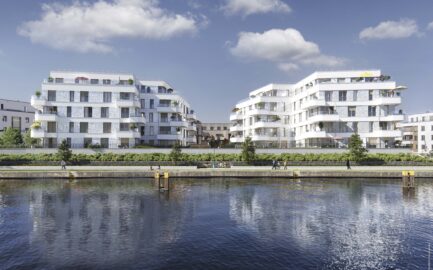Saving energy is essential. When looking for possibilities to reduce daily energy consumption, checking your home office as an “energy trap” is worthwhile. The following tips and suggestions will help with the selection and use of various technical devices.
As a result of the coronavirus pandemic, many of us have learned about the benefits of a home office. Working from home continues to be a popular alternative to going to the office. But the more one’s home is used as a workplace, the more important it is to choose environmentally friendly and energy-efficient office equipment – without sacrificing convenience and ergonomics.
First: the most important electricity tips in a home office
The well-considered purchase and use of devices can effectively reduce your own electricity costs:
- For the same usage, a laptop is generally much more efficient.
- Before buying, consider what functions the device will have. Features such as size and computing power have a direct impact on electricity consumption.
- At the end of the working day, all home office devices should be completely switched off. The often-used energy-saving mode continues to consume power even in standby.
- Use a power strip that allows all devices to be disconnected from the power supply with a switch.
- Adjust the screen brightness: the screen brightness is often set higher than necessary, which in turn consumes more electricity.
- Use only LED lamps for optimal energy-efficient lighting.
Equipping your home office sustainably and efficiently
Monitors: everything you need to know in the home office
The use of laptops at the workplace is especially popular in the home office. However, notebook screens are too small for more extended working hours. Experts recommend the use of a larger external monitor. When choosing an external monitor, standards such as ergonomics and energy consumption should be considered in addition to features such as image resolution and connection.
Sustainable labels for monitors
There are numerous international labels for environmental protection and sustainability standards that can be used as a guide when purchasing. EPEAT (Electronic Product Environmental Assessment Tool) provides information on the performance of monitor models with regard to environmental standards concerning manufacturing, service life, recycling options and device packaging. The monitors listed on topprodukte.at must have an EPEAT rating of at least silver. Another certification for office equipment is the TCO Certified label developed in Sweden. The German Blue Angel eco-label is also a good guide for choosing an environmentally friendly display.
Screen format and resolution
In general, a screen format of 22 to 24 inches with a full HD resolution (1,920 x 1,080 pixels) is sufficient for standard applications such as internet, email and word processing. On the other hand, if you work in the field of image and video editing, significantly higher resolutions such as the so-called 4K resolution (2840 x 2160 pixels) can be advantageous.
Furthermore, a larger screen is recommended if several windows are to be open at the same time while working. Current standard monitors have an HDMI or USB-C connection as well as a display port integrated, by which they can be connected to the computer.
Selecting a printer: orientation based on need
Individual use must also be considered when selecting a suitable printer. A distinction must be made between inkjet printers, laser printers and photo printers.
Multifunctional printers can also scan and copy, which is particularly practical in a home office. Such devices eliminate the need to purchase corresponding individual devices and thus save on costs and electricity. However, it is now possible to replace physical scanners by using smartphone cameras and corresponding scanner apps.
One of the most important factors in the decision-making process are the follow-up costs. Although household printers, especially inkjet printers, are usually quite affordable, ink cartridges and toner are expensive. Here, it is possible to save primarily by purchasing from third-party suppliers.
The proper ergonomics
The stand of a monitor should offer more adjustment options than just a horizontal tilt. Ideally, monitors are height-adjustable or the stand can even be rotated. The monitor should be at least 60 cm away from the user and form a 90-degree angle with the window. To make the workplace as ergonomic as possible, height-adjustable and tiltable desks and office chairs should also be considered.
Ergonomics when working with a monitor also include optimal lighting conditions and the appropriate screen brightness. The contrast between the screen and the ambient brightness should not be too significant, otherwise this can quickly tire the eyes. In a brighter environment, you should choose a device with a higher maximum brightness. The maximum brightness of modern high-quality displays is between 250 and 350 cd/m2 (candela per square metre).
The appropriate lighting is also relevant. Well-chosen lighting conditions can increase concentration, motivation and performance. The optimal and most energy-saving lighting conditions are during daylight. The workplace should be illuminated as evenly as possible. Neutral white light (3,300 to 5,300 Kelvin) is suitable for room lighting in the home office. The luminous intensity should be approximately 500 lux.
The topprodukte.at brochure “Effiziente TV-Geräte, Monitore und Drucker” (in German) offers further tips for buying efficient monitors and printers and for their environmentally friendly and ergonomic use.










